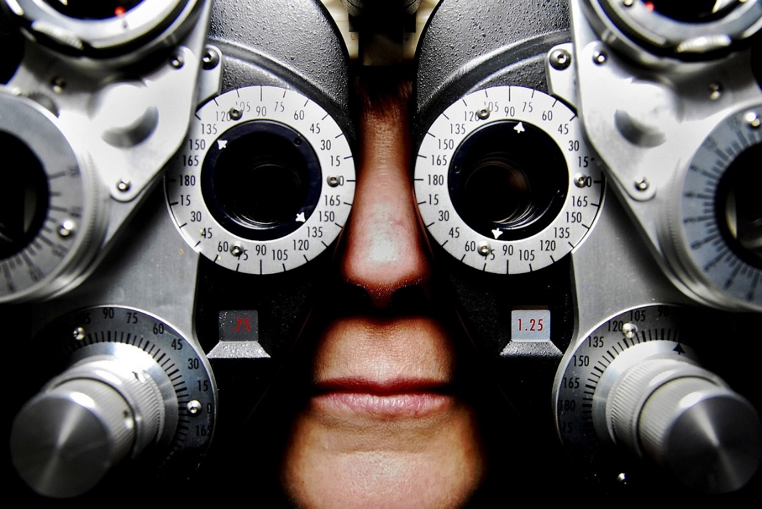If you’re having problems with your vision, it’s frightening. This article will outline some first steps for you in correcting your vision problems. The specialists that are involved in your vision care may include the following:
Optometrist
This specialist is a Doctor of Optometry. This is the place that most people start to determine their farsightedness (hyperopia), nearsightedness (myopia), or other basic vision problems. The Optometrist is trained to evaluate vision problems through a basic eye exam. They can prescribe glasses or contact lenses that are made to correct issues with your vision.
Ophthalmologist
Your Optometrist may refer you to an Ophthalmologist if they feel you need to see an eye doctor with a medical degree. This is the “next level” doctor that deals in more extreme vision issues. If there are complications with your myopia or hyperopia, they will refer to this specialist.
Optician
You would see an Optician for corrective glasses. They will look at the nearsighted vs. farsighted prescription and create a prescription lens for your exact needs. They will build, assemble and sell you your new glasses. Some opticians are trained to assist you with contact lenses as well.
What Does It Mean to Be Farsighted or Nearsighted?
Nearsightedness and Farsightedness are both refractive errors. This means that in both cases, light enters the cornea, and is refracted to the wrong place before it reaches the retina. This is usually caused by the shape of the eyeball itself. A third refractive error is possible, which is called astigmatism. In this case, both types of vision, near and far, are affected. So, which disease do you have, myopia, hyperopia, or astigmatism? Let’s break down the two issues.
Nearsightedness (Myopia)
In Myopia, when the cornea and lens receive waves of light, it is sent to the wrong place in the eye. These light waves are sent to another spot in the eye before they get to the retina. This is usually the result of a large or elongated eyeball. The result is nearsightedness. Your distance vision suffers. This is the most common type of refractive vision issue. Nearsighted people make up nearly a quarter of the population.
Myopia normally manifests itself by causing eye strain, squinting, headaches, or “tired eyes”. You may notice things being really fuzzy if you are suffering from Myopia.
Farsightedness (Hyperopia)
If you suffer from Hyperopia, chances are that your eyeball is too short, or your cornea is too flat. In either case, the light does not reach the retina properly, which results in the ability to see far away, but not up close.
When the natural lens begins to harden, around age 40, you may develop Presbyopia. This is what dictates the necessity of reading glasses in people as they age. People may mistake this for Hyperopia since both result in loss of vision close up. But, the two are not the same.
How Can Nearsightedness and Farsightedness be Treated?
Let’s start with a discussion of the differences between a nearsighted vs. farsighted prescription. There are basically three types of correction methods that can be used to restore your eyesight to optimum performance when you have Myopia or Hyperopia. You can get glasses with corrective lenses, you can wear contact lenses, or in some cases, you may want to consider LASIK surgery. Sometimes LASIK (also called refractive surgery) is not advisable.
The degree to which a person has a refractive error is measured in diopters. The ophthalmologist considers the diopter measurement to determine whether the patient is a good candidate for LASIK. They will also consider the shape of the eye itself to determine if a patient should expect a good outcome from LASIK. Normally, a pre-operative exam is performed, which includes a series of tests. This tells the doctor, before the surgery, what they need to do.
Should I Get Glasses or Contact Lenses?
For people with a considerable degree of myopia, strong glasses may help to correct the problem. Your prescription is measured in diopters for glasses and contact lenses. In some extreme cases, contact lenses may work better, as they adjust to the movement of the eye to stay centered on the lens when eyeglasses do not.
The same can be said for folks with hyperopia. Contact lenses tend to give a better correction result. Many people prefer the convenience or fashion factor of wearing prescription eyeglasses. Some people have a hard time overcoming the sensation of putting contact lenses in and taking them out.
Another decision that will be made is whether you will have bifocal, or multifocal glasses or contact lenses. If you need correction for astigmatism, this makes sense. Progressive lenses are popular right now and offer a more gradual transition from one prescription to the other. Work with your Optician to decide on the best way to fill the prescription from the Optometrist or Ophthalmologist.
They will ask the right questions to find a personalized solution for your vision issues and get your eyesight back to optimal.

